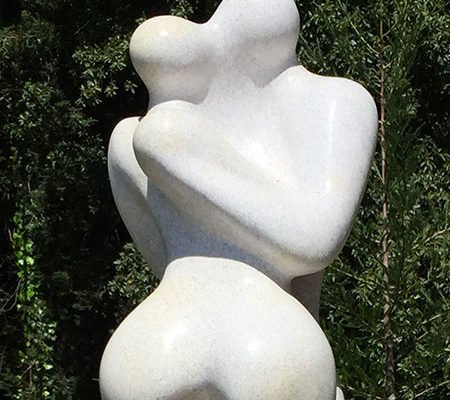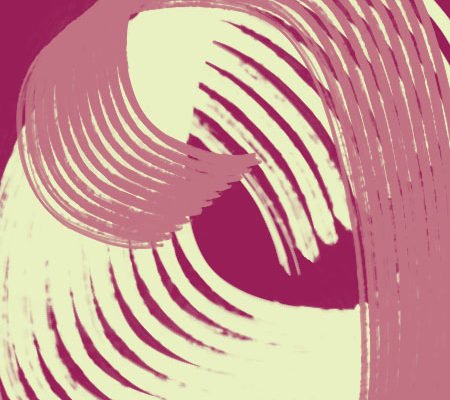 https://aipcf.net/wp-content/uploads/2017/02/couple-1.jpg
450
450
AIPCF
http://aipcf.net/wp-content/uploads/2017/02/logo-aipcf11.png
AIPCF2017-04-03 00:54:532017-05-11 15:00:13Theory and technique of couple psychoanalysis
https://aipcf.net/wp-content/uploads/2017/02/couple-1.jpg
450
450
AIPCF
http://aipcf.net/wp-content/uploads/2017/02/logo-aipcf11.png
AIPCF2017-04-03 00:54:532017-05-11 15:00:13Theory and technique of couple psychoanalysisCouples and Family Psychoanalytical Therapy Models
The model of Interfantasmatization. The Relational Psychic Apparatus in families, couples and groups.
Ezequiel A. Jaroslavsky (Buenos Aires), Irma Morosini (Buenos Aires)
We believe that the models of Interfantasmatization and Group Psychic Apparatus (terms coined by D. Anzieu), which we have called Relational Psychic Apparatus (Aparato Psíquico Vincular, in the original in Spanish), following the ideas of Marcos Bernard (Bernard, 1991, 1999), allow us to explain different unconscious phenomena that take place within Groups, Couples and Families, such as in the Family Psychic Apparatus (Ruffiot), Mother-child relationships, and so on. The aforementioned Relational Psychic Apparatus could be the result of a complex intertwining of projections and introjections which binds the group as a whole and in which, moreover, the individuals support themselves from a psychical perspective. In consequence processes of psychic transmission and transcription are thus produced among them. Within each relationship unconscious alliances are established: Narcissistic Contracts (Aulagnier, 1975) and Denegative Pacts (Kaës, 2000).
In this way the Relational Psychic Apparatus operates within families and couples. It is indeed a code-processor as it transcribes into the intra-psychic level what is happening within the inter-subjective space (Morosini, 2006).
Within families and couples that have to deal with pathological vicissitudes regressive phenomena predominate, the effects of which are: indiscrimination, deficit in verbal (symbolic) exchange as well as the de-subjectivation of its members (Jaroslavsky, 2005).
The technical approach within Family Therapy, Couples Therapy and Mother/father-child strategies requires a stable setting (Bleger, 1971) that can allow the display of transference, though it also requires that the therapeutic team reflects upon counter-transference. The use of this clinical material, which operates within the relationship field between the therapist and the patient, and the display of the group associative chain made possible by free-association, encourages verbalization complemented with play, creative expressivity (use of masks, modeling, use of puppets) and psycho-dramatic enactment.
Our main objective is to turn the therapeutic space into both a transitional space (Winnicott, 1971) and an intermediary space (Eiguer, 2006) that can operate facilitating processes of verbalization, symbolization, subjectivation and discrimination between the members. We believe that this transitional and intermediary space could also facilitate the emergence of secondary fantasies, thus permitting the working-through of grief and traumas which have been transgenerationally transmitted.
We are thus faced with the challenge of unraveling what remains hidden, what remains lacking significance because it has failed to be worked through by the psychic agencies of the family members, but which, nevertheless, lives on within the parental and family group memory. We believe that what remains hidden might surface in an appropriate context; i.e. by means of the verbal exchange between the family members, or by means of play, as their dreams, daydreams, fantasies and associations could provide a starting point for creativity.
In some cases we aim at working with certain elements (such as graphics, drawings, role-playing) that, at the pre-conscious level, could stimulate the emergence of memories, feelings and experiences that could, in turn, allow the display of the relational associative chain, making possible, in this way, the work of emotional and rational binding. The tasks of the analyst include both support and interpretations, according to the clinical situation.
The setting involves either weekly or fortnightly encounters, as in the beginning clinical meetings held with less frequency are inadvisable. The length of each session should be stable and it usually oscillates between one and two hours (when we are working with couples and families and taking into account their particular situation and their needs).
Clinical work with couples and with families demands a clear setting, enough flexibility, and the availability of several technical resources of the therapeutic team. Indeed, between the members of the family and the therapeutic team a new group is formed (Granjon, 2006). The changes undergone by family members, not only symptom relief, but also the lasting improvement in their relationship with each other, lead us to think that these are indeed real psychic changes.
Bibliography
Anzieu D. (1975): El grupo y el inconsciente. Lo imaginario grupal. Biblioteca Nueva. 1986. 2° edición, Madrid.
Aulagnier P (1975), La violencia de la interpretación, Amorrortu editores, 1977, Buenos Aires.
Bernard M. (1999): Los organizadores del vínculo de la pulsión al otro, Revista de la Asociación de Psicología y Psicoterapia de Grupo, Tomo XXII, Nº 1, 1999, Buenos Aires.
Bernard M. (1991): Introducción a la lectura de la obra de René Kaës, Publicación de la, Buenos Aires.
Bernard. M. (2001): Los vínculos en el psicoanálisis francés contemporáneo, seminario Nº 1 del 17 de agosto de 2001, Asociación Argentina de Psicología y Psicoterapia de Grupo, Buenos Aires.
Bleger José (1971): Simbiosis y Ambigüedad, un estudio psicoanalítico, Editorial Paidós, Buenos Aires. 1971.
Eiguer A (2006): Por un psicoanálisis familiar recreativo. Revista Psicoanálisis e Intersubjetividad, Nº 1 www.intersubjetividad.com.ar .
Granjon, E. (2006) : Le néo groupe, Le Divan Familial, Paris, In Press.
Jaroslavsky E. A (2006): El modelo vincular franco argentino contemporáneo. Revista Psicoanálisis e Intersubjetividad Nº 1 www.intersubjetividad.com.ar .
Jaroslavsky E. A (2006) : Indicateurs de changement dans les thérapies de couple. De la transmission trans-subjective à la transmission intersubjective. Le Divan Familial Nº 14, Printemps 2005. Paris.
Kaës R. (1976) : L’Appareil psychique groupal. Constructions du groupe, Paris, Dunod (nouvelle édition 2000).
Kaës R. (1999) : Les théories psychanalytiques du groupe, PUF, Paris, trad. esp. Las teorías psicoanalíticas del grupo, Amorrortu, 2000, Buenos Aires.
Kaës, R. (1993) y al.: Transmisión de la vida psíquica entre generaciones. Amorrortu editores, 1996. Buenos Aires.
Morosini Irma (2006): Vincularidad Simbiótica filial: El infans capturado por el deseo y el discurso materno, Rev. Psicoanálisis & Intersubjetividad Nº 1 www.intersubjetividad.com.ar .
Pichon – Rivière, E. (1979): Teoría del Vínculo. Nueva Visión. Buenos Aires.
Ruffiot. A, (1981), Le groupe famille en analyse, L´appareil psychique familial, Editorial Dunod, 1981, Paris.
Ruffiot A. (1984), Le couple et l’amour. De l’originaire au groupal, in Ruffiot A. et col. La thérapie psychanalytique du couple, Dunod, Paris.
Winnicott D. (1971) Realidad y Juego, 1972, Granica Editorial, Buenos Aires
See also :
 https://aipcf.net/wp-content/uploads/2017/02/couple-1.jpg
450
450
AIPCF
http://aipcf.net/wp-content/uploads/2017/02/logo-aipcf11.png
AIPCF2017-04-03 00:54:532017-05-11 15:00:13Theory and technique of couple psychoanalysis
https://aipcf.net/wp-content/uploads/2017/02/couple-1.jpg
450
450
AIPCF
http://aipcf.net/wp-content/uploads/2017/02/logo-aipcf11.png
AIPCF2017-04-03 00:54:532017-05-11 15:00:13Theory and technique of couple psychoanalysis https://aipcf.net/wp-content/uploads/2017/02/couple-4.jpg
450
450
AIPCF
http://aipcf.net/wp-content/uploads/2017/02/logo-aipcf11.png
AIPCF2017-04-03 00:52:492017-05-11 15:02:41Psychoanalytic psychotherapy of the couple and attachment
https://aipcf.net/wp-content/uploads/2017/02/couple-4.jpg
450
450
AIPCF
http://aipcf.net/wp-content/uploads/2017/02/logo-aipcf11.png
AIPCF2017-04-03 00:52:492017-05-11 15:02:41Psychoanalytic psychotherapy of the couple and attachment https://aipcf.net/wp-content/uploads/2017/02/Modeles3.jpg
450
450
AIPCF
http://aipcf.net/wp-content/uploads/2017/02/logo-aipcf11.png
AIPCF2017-04-03 00:50:522017-05-11 15:05:21The place and the practice of CFPT prenatally (before and after birth)
https://aipcf.net/wp-content/uploads/2017/02/Modeles3.jpg
450
450
AIPCF
http://aipcf.net/wp-content/uploads/2017/02/logo-aipcf11.png
AIPCF2017-04-03 00:50:522017-05-11 15:05:21The place and the practice of CFPT prenatally (before and after birth) https://aipcf.net/wp-content/uploads/2017/02/COUPLE-2.jpg
450
450
AIPCF
http://aipcf.net/wp-content/uploads/2017/02/logo-aipcf11.png
AIPCF2017-04-03 00:44:402017-05-11 15:06:24Psychoanalytic Intervention models with the parental couple
https://aipcf.net/wp-content/uploads/2017/02/COUPLE-2.jpg
450
450
AIPCF
http://aipcf.net/wp-content/uploads/2017/02/logo-aipcf11.png
AIPCF2017-04-03 00:44:402017-05-11 15:06:24Psychoanalytic Intervention models with the parental couple https://aipcf.net/wp-content/uploads/2017/02/Modeles5.jpg
450
450
AIPCF
http://aipcf.net/wp-content/uploads/2017/02/logo-aipcf11.png
AIPCF2017-04-03 00:42:422017-05-11 15:08:28The model of Interfantasmatization. The Relational Psychic Apparatus in families, couples and groups.
https://aipcf.net/wp-content/uploads/2017/02/Modeles5.jpg
450
450
AIPCF
http://aipcf.net/wp-content/uploads/2017/02/logo-aipcf11.png
AIPCF2017-04-03 00:42:422017-05-11 15:08:28The model of Interfantasmatization. The Relational Psychic Apparatus in families, couples and groups. https://aipcf.net/wp-content/uploads/2017/05/Famille-1.jpg
500
500
AIPCF
http://aipcf.net/wp-content/uploads/2017/02/logo-aipcf11.png
AIPCF2017-04-03 00:40:442017-05-11 15:10:32Le groupe multi-familial psychanalytique (G.M.F.P.)
https://aipcf.net/wp-content/uploads/2017/05/Famille-1.jpg
500
500
AIPCF
http://aipcf.net/wp-content/uploads/2017/02/logo-aipcf11.png
AIPCF2017-04-03 00:40:442017-05-11 15:10:32Le groupe multi-familial psychanalytique (G.M.F.P.) https://aipcf.net/wp-content/uploads/2017/02/couple3.jpg
450
450
AIPCF
http://aipcf.net/wp-content/uploads/2017/02/logo-aipcf11.png
AIPCF2017-04-03 00:38:472017-05-11 15:26:17The soma is individual; the psyche is essentially a group
https://aipcf.net/wp-content/uploads/2017/02/couple3.jpg
450
450
AIPCF
http://aipcf.net/wp-content/uploads/2017/02/logo-aipcf11.png
AIPCF2017-04-03 00:38:472017-05-11 15:26:17The soma is individual; the psyche is essentially a group https://aipcf.net/wp-content/uploads/2017/02/Modeles8.jpg
450
450
AIPCF
http://aipcf.net/wp-content/uploads/2017/02/logo-aipcf11.png
AIPCF2017-04-03 00:35:542017-05-11 15:22:20Specific nature of our model within the context of PCFT: Field link and co therapy using psychoanalytic psychodrama.
https://aipcf.net/wp-content/uploads/2017/02/Modeles8.jpg
450
450
AIPCF
http://aipcf.net/wp-content/uploads/2017/02/logo-aipcf11.png
AIPCF2017-04-03 00:35:542017-05-11 15:22:20Specific nature of our model within the context of PCFT: Field link and co therapy using psychoanalytic psychodrama. https://aipcf.net/wp-content/uploads/2017/02/lolo_ipi.gif
148
177
AIPCF
http://aipcf.net/wp-content/uploads/2017/02/logo-aipcf11.png
AIPCF2017-02-22 11:23:312017-05-11 15:24:48IPI’s way of working
https://aipcf.net/wp-content/uploads/2017/02/lolo_ipi.gif
148
177
AIPCF
http://aipcf.net/wp-content/uploads/2017/02/logo-aipcf11.png
AIPCF2017-02-22 11:23:312017-05-11 15:24:48IPI’s way of working




